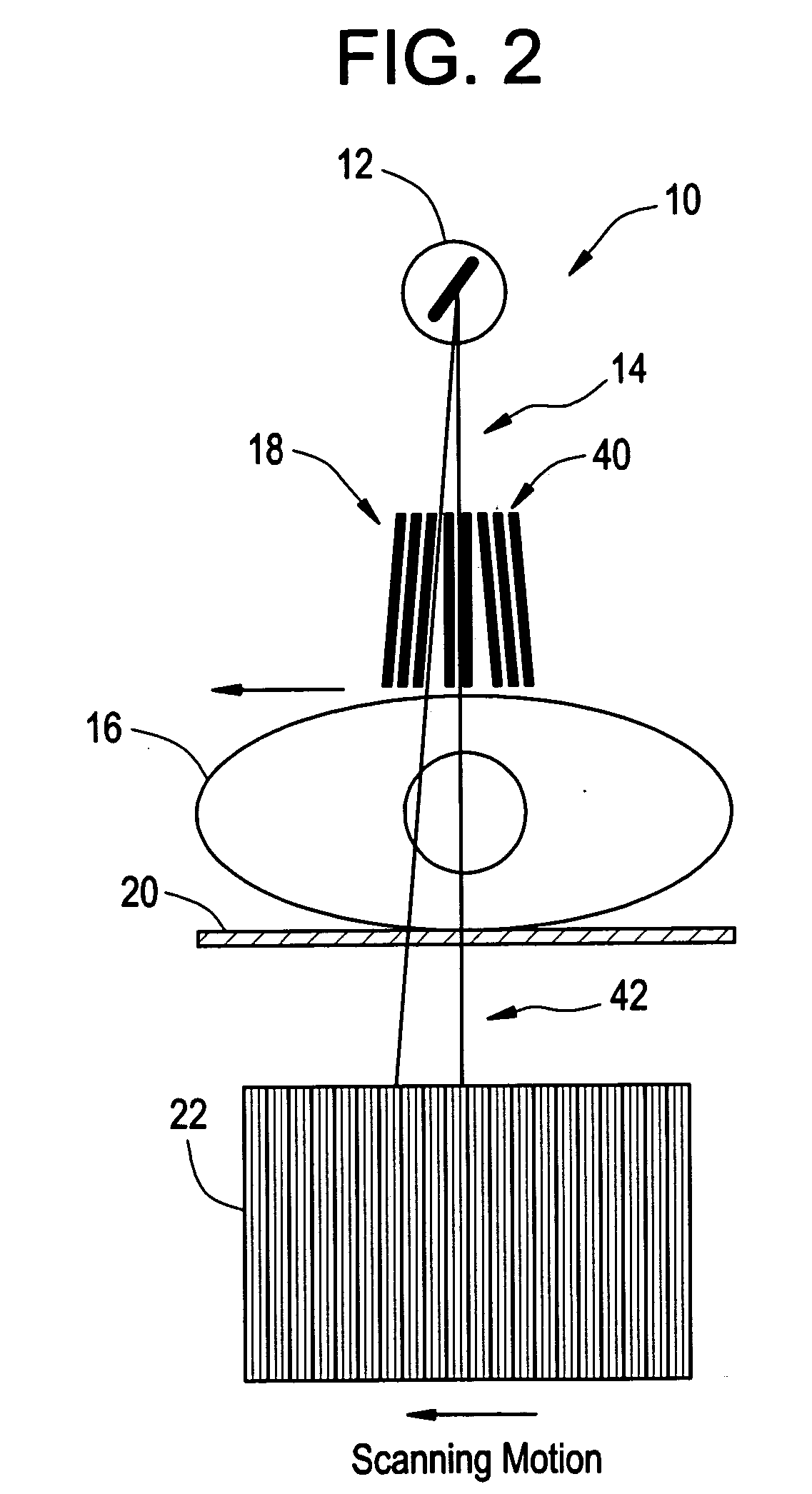Flat panel detector based slot scanning configuration
a detector and slot scanning technology, applied in the field of diagnostic radiology, can solve the problems of reducing contrast, low speed scanning techniques are not practical in diagnostic radiology, and the general effect of unsatisfactory techniques for obtaining high image quality
- Summary
- Abstract
- Description
- Claims
- Application Information
AI Technical Summary
Benefits of technology
Problems solved by technology
Method used
Image
Examples
Embodiment Construction
[0028] Clear, high quality X-ray images are necessary to obtain the degree of detail needed to permit accurate diagnosis of disease and detection of tumors and other improper growths in the crowded abdominal area, for example. However, due to the thickness and dense concentration of material in the abdomen, and the large radiation field necessary to image that area, a large amount of X-rays are scattered, thus making it difficult to obtain clear images, as provided previously. Accordingly, it is highly desirable and important to the advancement of diagnostic radiography (abdominal diagnostic radiography for example) that clear X-ray images (i.e., having enhanced contrast) be obtained.
[0029] At least one embodiment relates in general to configuring a diagnostic X-ray device, system or apparatus and performing diagnostic radiology using such a configured X-ray device, system or apparatus. More particularly, embodiments are directed to an X-ray device, system or apparatus having at le...
PUM
| Property | Measurement | Unit |
|---|---|---|
| focal spot size | aaaaa | aaaaa |
| focal spot size | aaaaa | aaaaa |
| width | aaaaa | aaaaa |
Abstract
Description
Claims
Application Information
 Login to View More
Login to View More - R&D
- Intellectual Property
- Life Sciences
- Materials
- Tech Scout
- Unparalleled Data Quality
- Higher Quality Content
- 60% Fewer Hallucinations
Browse by: Latest US Patents, China's latest patents, Technical Efficacy Thesaurus, Application Domain, Technology Topic, Popular Technical Reports.
© 2025 PatSnap. All rights reserved.Legal|Privacy policy|Modern Slavery Act Transparency Statement|Sitemap|About US| Contact US: help@patsnap.com



